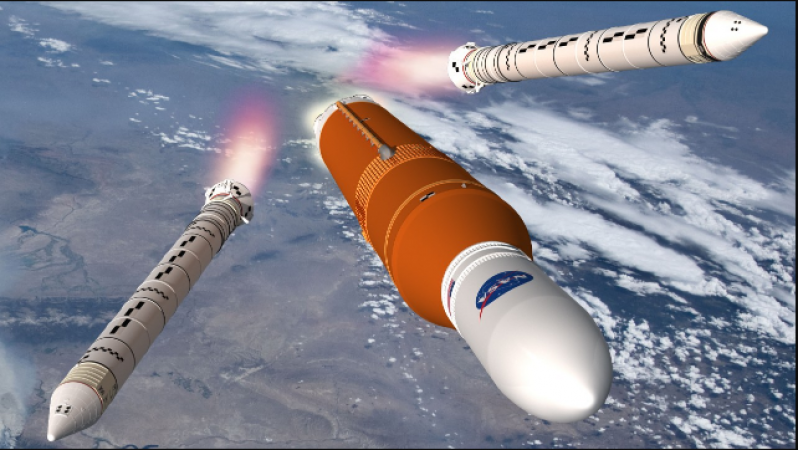
USA: NASA's Space Launch System (SLS) is the strongest rocket ever built. It produced 8.8 million pounds of thrust during the first launch of Artemis 1.
It is 15% more powerful than the famous Saturn V rocket that launched the Apollo missions to the Moon. According to NASA, its thrust is roughly equivalent to 25,000 train engines operating in the US.
NASA's Artemis 1 mission was the successful unmanned test flight of the SLS rocket and Orion spacecraft. A manned mission around the Moon, called Artemis 2, is currently being prepared.
Also Read: The LVM3-M3/OneWeb India-2 mission is scheduled to launch on March 26
According to investigations conducted after Artemis 1, the SLS rocket exceeded expectations during its first launch, and its "designs are prepared to support crewed flight on Artemis 2."
SLS is 322 feet tall, which surpasses the height of the Statue of Liberty. The rocket is designed to be adaptable, making it capable of carrying out more missions, such as robotic scientific missions to places such as the Moon, Mars, Saturn and Jupiter, as well as manned missions to the Moon and Mars.
NASA's Saturn V rocket, which carried astronauts into deep space, was 41 feet taller than the SLS.
Each SLS configuration uses four RS-25 engines on the core stage. The first SLS vehicle, known as Block 1, has a launch mass of approximately 27,000 kg.
Also Read: The equinoxes in late March and late September are the best times to see auroras
It is propelled by two liquid propellant engines and a five-segment solid rocket booster. On the Artemis 1 mission, the Interim Cryogenic Propulsion Stage (ICPS) rocket booster took off, propelling Orion around the Moon.
According to NASA, the core stage serves as the "backbone of the rocket". It supports the thrust of its four RS-25 engines, the weight of the payload, upper stage, crew vehicle and "two five-section solid rocket boosters connected by engine and intertank sections".
The Exploration Upper Stage will be used in a variety of rocket configurations on missions carrying astronauts. It is known as "Block 1B" and has 38,000 kg of capacity for crew and cargo.
Block 2 will be the "workhorse vehicle for sending cargo to the Moon, Mars and other deep space destinations" and will have 9.5 million pounds of thrust. 46,000 kg load can be lifted in deep space.
In the most recent progress on Artemis 2, the teams have integrated all five major components of the SLS rocket's core.
Also Read: A new version of WhatsApp for iOS beta was recently released
Four RS-25 engines will be installed by engineers to finish the phase. The first crewed Artemis mission, Artemis 2, will send four astronauts around the Moon and bring them back. The anticipated opening date is November 2024.